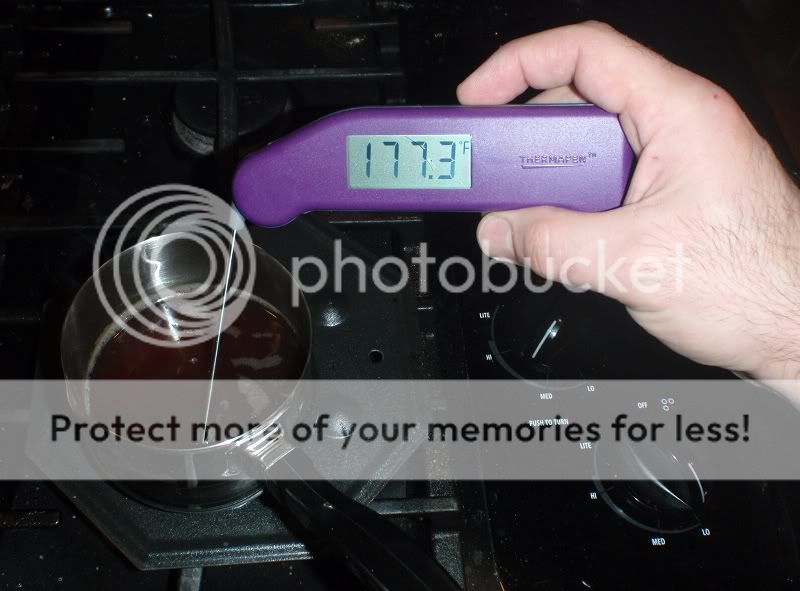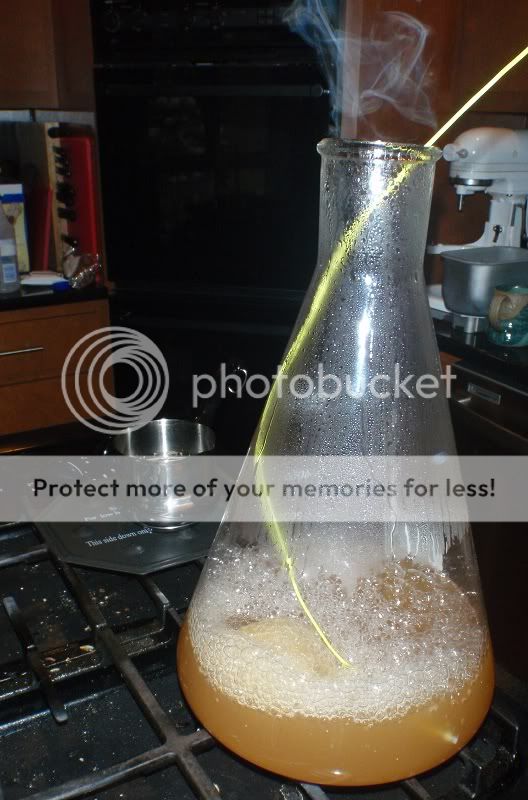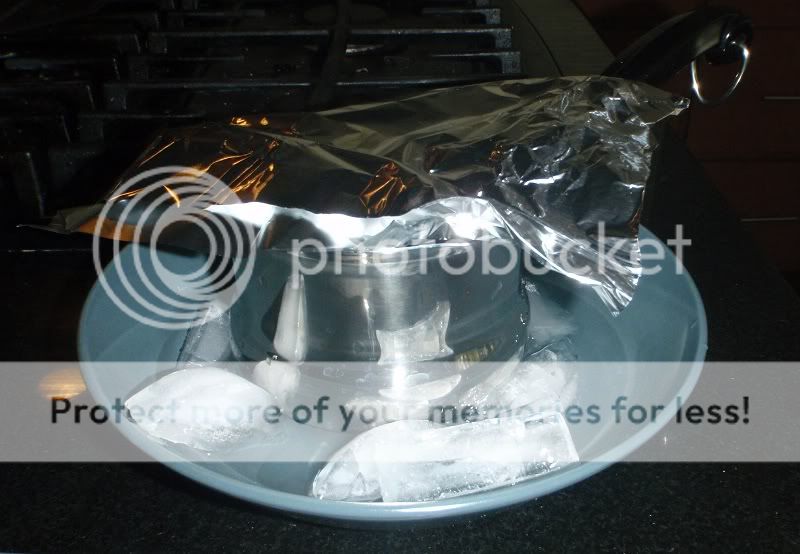nostalgia
Well-Known Member
At a recent meeting of our homebrew club, someone was talking about their beer tasting of band-aids, and how that flavor doesn't age out.
That got me thinking about the low-alcohol experiment that Biermuncher did a few years back. I was wondering if the heat would also drive off the flavor compounds that make up the Band-Aid flavor.
Now that I look at the science, my guess is "no" - the boiling point of ethanol is 172F, where the boiling point of phenol is 359F - but hey, it's worth a shot, right?
I wanted to start out by expanding a bit on BM's work in the previous thread by getting some good measurements. Unfortunately, I don't have the SG or ABV of the beer I'm using, but I was able to get relative starting/ending numbers.
So first I weighed the beer and took a gravity reading: 317 grams at 1.003. I then put it in a pan and kept it between 175 and 180F for 30 minutes.

While I was waiting, I boiled a big starter for my Oktoberfest lager. I thought the steam coming from the mouth was cool

Then I chilled it down with my high-tech cooling apparatus.

Once it was cool, I weighed again and took another gravity reading: 247 grams and 1.013! I didn't expect to lose 70 grams - that's 22% of the original beer. I'm definitely going to have to double-check that on the next bottle.
Not knowing the OG or ABV of the beer, I don't think we can calculate exactly how much alcohol was driven off, but it's obvious that quite a bit was.
So now that's done, I'll do the same with the Band-Aid brew, being more careful to avoid oxidation so we can have a reasonable flavor comparison.
-Joe
That got me thinking about the low-alcohol experiment that Biermuncher did a few years back. I was wondering if the heat would also drive off the flavor compounds that make up the Band-Aid flavor.
Now that I look at the science, my guess is "no" - the boiling point of ethanol is 172F, where the boiling point of phenol is 359F - but hey, it's worth a shot, right?
I wanted to start out by expanding a bit on BM's work in the previous thread by getting some good measurements. Unfortunately, I don't have the SG or ABV of the beer I'm using, but I was able to get relative starting/ending numbers.
So first I weighed the beer and took a gravity reading: 317 grams at 1.003. I then put it in a pan and kept it between 175 and 180F for 30 minutes.

While I was waiting, I boiled a big starter for my Oktoberfest lager. I thought the steam coming from the mouth was cool

Then I chilled it down with my high-tech cooling apparatus.

Once it was cool, I weighed again and took another gravity reading: 247 grams and 1.013! I didn't expect to lose 70 grams - that's 22% of the original beer. I'm definitely going to have to double-check that on the next bottle.
Not knowing the OG or ABV of the beer, I don't think we can calculate exactly how much alcohol was driven off, but it's obvious that quite a bit was.
So now that's done, I'll do the same with the Band-Aid brew, being more careful to avoid oxidation so we can have a reasonable flavor comparison.
-Joe

